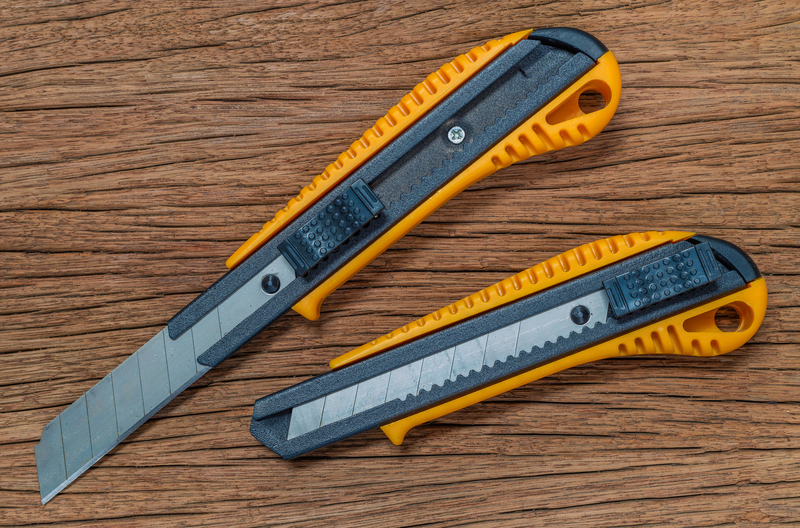Step-by-Step Shed Moving Instructions
Posted on 25/10/2024
Moving a shed can seem like a daunting task, but with proper planning and execution, it is entirely manageable. Whether you're relocating your shed to a different part of your yard or to a new property altogether, this guide will provide you with detailed, step-by-step instructions to ensure a smooth and safe move.
Materials and Tools Needed
Before you start, gather the following materials and tools:
- Work gloves
- Measuring tape
- Jacks (hydraulic or bottle jacks)
- Wood for bracing (2x4s or similar)
- Heavy-duty straps or chains
- Shovel
- Dolly or rollers
- Truck or trailer (if moving long distances)
- Screwdriver or drill
- Sledgehammer

Preparation Steps
Before you initiate the actual move, thorough preparation is crucial.
1. Empty the Shed
Clear out everything inside the shed; this includes tools, equipment, and any other items. An empty shed is much lighter and easier to move. Additionally, removing contents prevents damage to both the items and the shed during the move.
2. Measure the Shed
Use a measuring tape to measure the shed's dimensions, including the height, width, and length. This information will help you determine the type of trailer or pathway clearance needed.
3. Assess the Pathway
Inspect the route you plan to take when moving the shed. Make sure there are no obstructions such as trees, electrical wires, or uneven ground that could hinder the move. If necessary, clear the path beforehand.
Disassembly (If Needed)
In some cases, disassembling the shed partially or fully might be necessary, especially if the moving path is complex or the shed is large.
4. Remove Doors and Windows
Take off the shed's doors and windows to prevent them from swinging open during the move. Use a screwdriver or drill to unscrew hinges and screws carefully.
5. Detach Roof Panels
If your shed has removable roof panels, consider taking them off. This will reduce the overall height and weight of the structure, making it easier to handle.
Preparing the Shed for Movement
With the shed now emptied and possibly partially disassembled, you can prepare it for the actual moving process.
6. Lift the Shed
Using hydraulic or bottle jacks, lift the shed slowly and evenly. Place the jacks at multiple points along the shed's base to distribute the weight evenly. You may need wood blocks to support the jacks and to raise the shed incrementally.
7. Insert Rollers or a Dolly
Once lifted, insert rollers or a dolly underneath the shed. This will enable you to move the shed with ease.
8. Secure the Shed
If using a trailer or truck, use heavy-duty straps or chains to secure the shed, ensuring it remains stable during transit. Double-check all connections to make sure they are tight and secure.
Moving the Shed
With everything in place, you are now ready to move the shed.
9. Slow and Steady Movement
If you are using rollers or a dolly, push the shed gently but firmly, making sure to move it slowly to prevent tipping. Use guiding ropes if necessary to help maneuver around small obstacles.
10. Using a Vehicle
If a vehicle is necessary, drive slowly and avoid sudden stops or accelerations. Ensure that your pathway is clear and constantly monitor the shed's position to prevent any shifting.
Reinstallation
Once you've moved the shed to its new location, follow these steps to set it in place:
11. Lower the Shed
Using the jacks, carefully lower the shed onto its foundation or chosen spot. Remove the rollers or dolly during the process.
12. Reattach Components
If you disassembled any parts of the shed, now is the time to reattach doors, windows, and roof panels. Use your screwdriver or drill to secure all components properly.
13. Level the Shed
Ensure that the shed is level and stable. Use wood blocks or shims if necessary to stabilize it. A level shed is crucial for proper structural integrity and to prevent water from flowing in during rain.

Final Checks
After the shed is positioned and assembled, conduct a final inspection:
14. Inspect for Damage
Check the shed thoroughly for any signs of damage incurred during the move. Look for cracks, loose screws, or any misalignments.
15. Reinforce as Needed
If there are areas of concern, reinforce them immediately. This might involve adding extra bracing or tightening screws. Small fixes now can save significant problems later.
16. Reorganize Interior
Once satisfied with the shed's condition and position, you can start moving back your tools, equipment, and other items. Organize efficiently to maximize space.
Conclusion
Moving a shed requires careful planning, the right tools, and patience. By following the step-by-step instructions laid out in this guide, you can ensure a safe and successful move with minimal stress. Always prioritize safety by wearing appropriate gear and seeking help if needed. With these preparations and measures, your shed relocation can be a straightforward and rewarding process.








